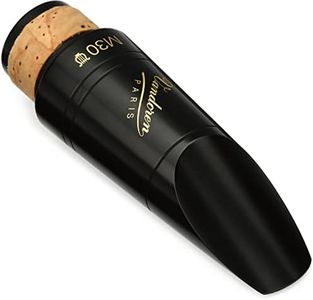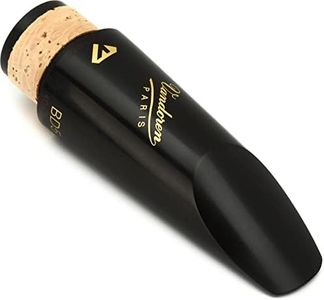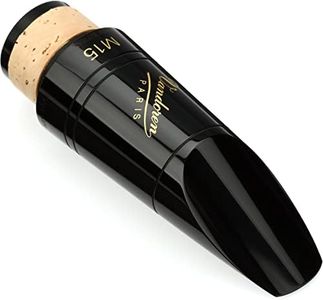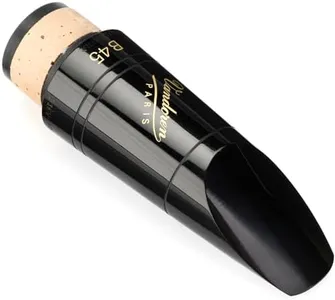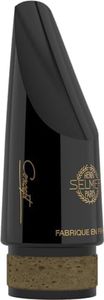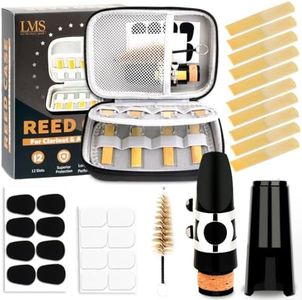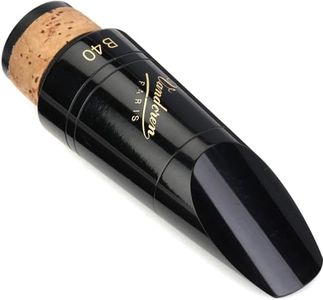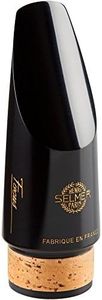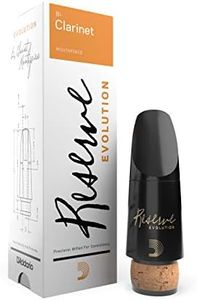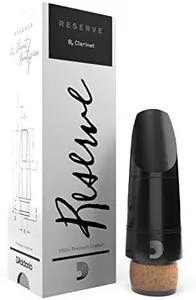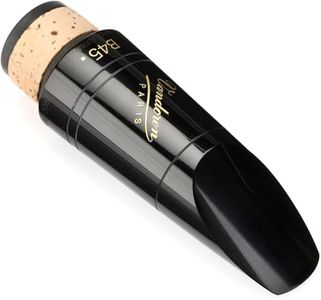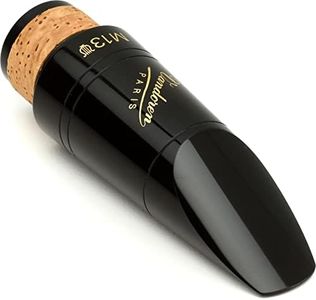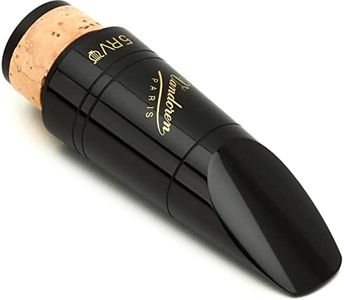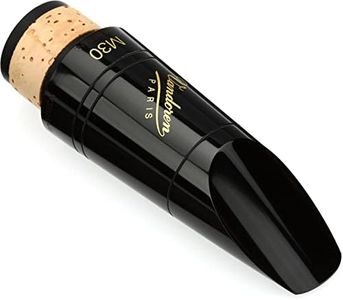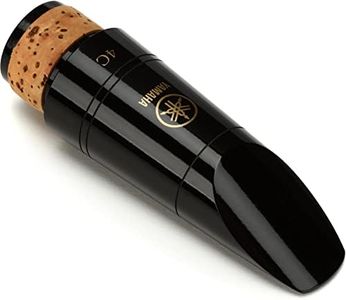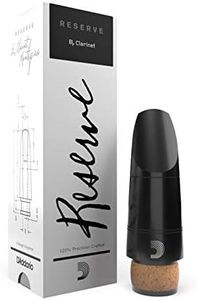10 Best Clarinet Mouthpieces 2025 in the United States
Our technology thoroughly searches through the online shopping world, reviewing hundreds of sites. We then process and analyze this information, updating in real-time to bring you the latest top-rated products. This way, you always get the best and most current options available.

Our Top Picks
Winner
Vandoren CM40018 13 Series M30 Lyre Profile 88 Bb Clarinet Mouthpiece
The Vandoren CM40018 13 Series M30 Lyre Profile 88 Bb Clarinet Mouthpiece is crafted from durable rubber, which is a popular choice for mouthpieces due to its reliability and sound quality. With a tip opening of 113.5 (1/100mm) and a long facing, this mouthpiece is designed for players who prefer a more flexible and responsive playing experience.
It's particularly well-suited for use with Vandoren #3-#4 reeds, providing a good balance of resistance and ease of play. The Profile 88 beak and Series 13 with an A=440 pitch make it a versatile option for various playing styles and settings, especially for those who play in orchestras or bands that tune to A=440.
Weighing only 1.76 ounces and with compact dimensions of 1.75 x 6 x 1.75 inches, it is lightweight and easy to handle. One limitation might be its specific compatibility with certain reeds, which could require players to stick to Vandoren reeds for optimal performance. This mouthpiece ranks #9 in Clarinet Mouthpieces on Amazon, reflecting its popularity and reliability in the musical community.
Vandoren Clarinet Mouthpiece (CM1405)
The Vandoren Clarinet Mouthpiece (CM1405) is a solid choice for clarinet players, especially those looking for clarity and a rich sound. Made from rubber, it offers a comfortable playing experience and is known for its flawless intonation, making it a reliable option for both beginners and experienced musicians. The unique chamber design contributes to its depth and presence, allowing for expressive play. This mouthpiece is particularly well-regarded within the Vandoren brand, which is known for its quality and craftsmanship.
Some players may find that the tip opening and facing length are not as versatile as other options on the market, which could limit its appeal for those seeking a more customized feel. It may not suit every player's style or preference, particularly those who favor a different tonal quality or response.
If you're looking for a mouthpiece that delivers a bright, clear sound and is well-constructed, the Vandoren CM1405 is worth considering, especially if you value good intonation and presence in your playing.
Vandoren CM3178 M15 Profile 88 Bb Clarinet Mouthpiece
Most important from
733 reviews
The Vandoren CM3178 M15 Profile 88 Bb Clarinet Mouthpiece is made from ebonite, a durable and high-quality material, which contributes to its solid build and rich sound quality. The tip opening of 103.5 (1/100mm) is on the larger side, making it easier to produce a fuller, more vibrant sound. The long facing length means it offers better control over a wide range of volumes and articulations, which is excellent for more advanced players who need that flexibility.
The Profile 88 beak design allows for a more comfortable playing experience, accommodating different playing styles and embouchures. However, it might not suit beginners perfectly due to the need for more precise control and embouchure strength to harness its full potential. It works best with Vandoren #3.5-#5 reeds, which are typically harder reeds and could be challenging for new players to manage.
The mouthpiece's design aims for ease of articulation and a colorful spectrum of sound, making it a favorite among professionals and serious students. Weighing only 1.6 ounces and having compact dimensions, it is lightweight and easy to carry. Those looking for a versatile, high-quality mouthpiece for more advanced play will likely appreciate the Vandoren CM3178 M15 Profile 88 Bb Clarinet Mouthpiece, but beginners might find it a bit challenging at first.
